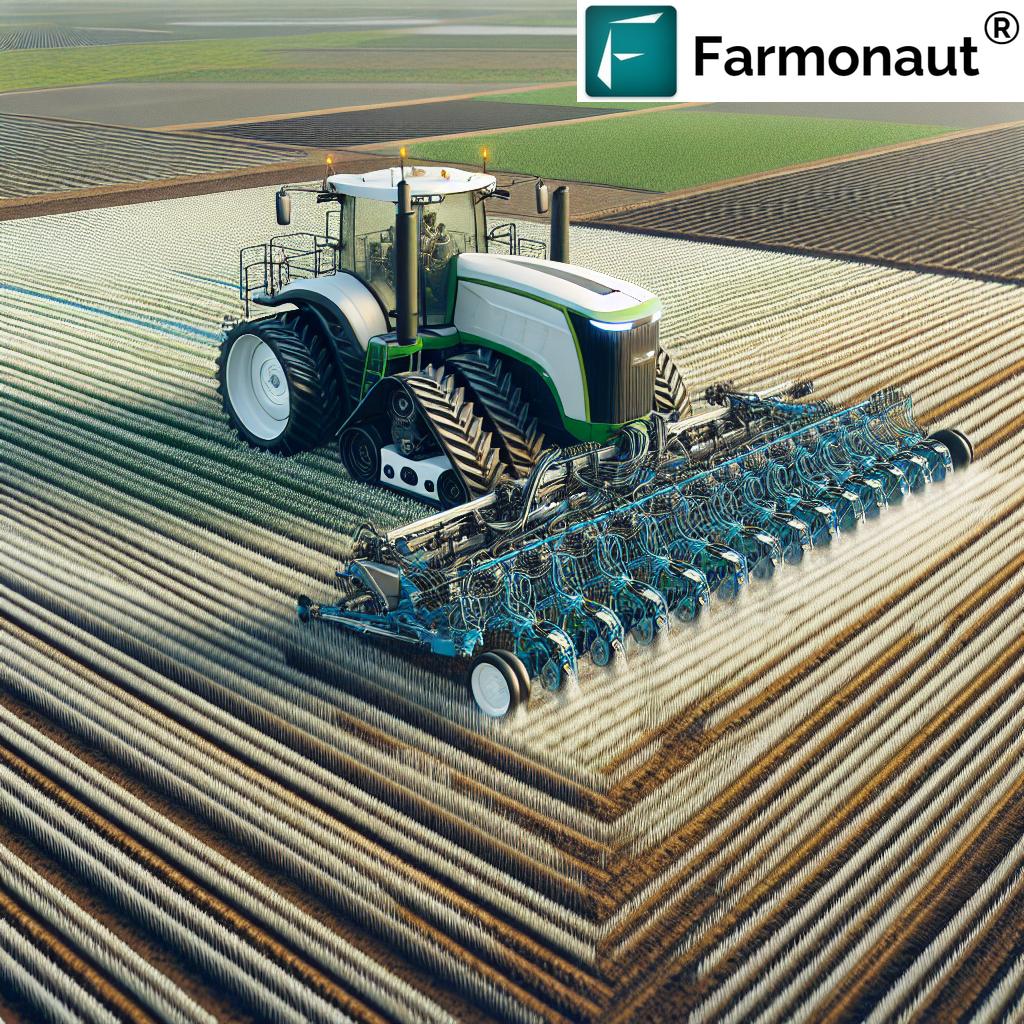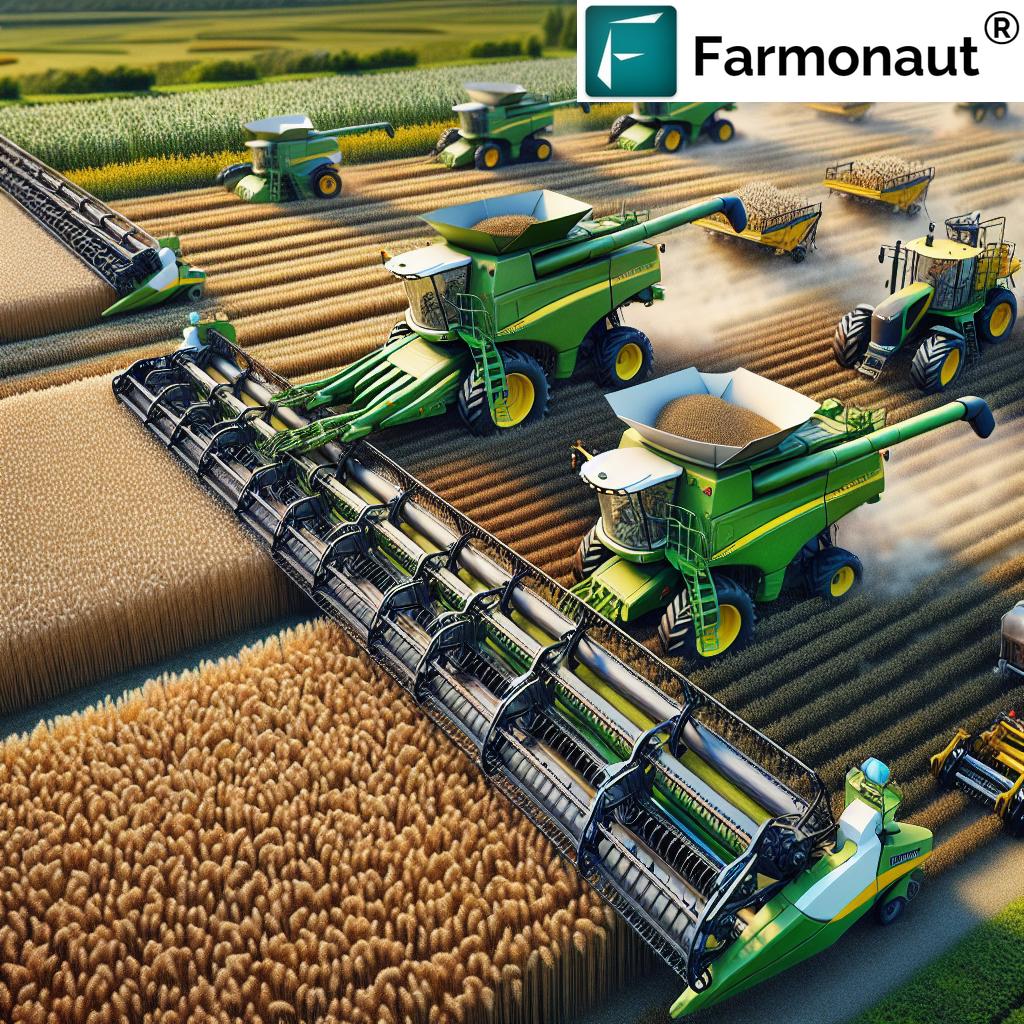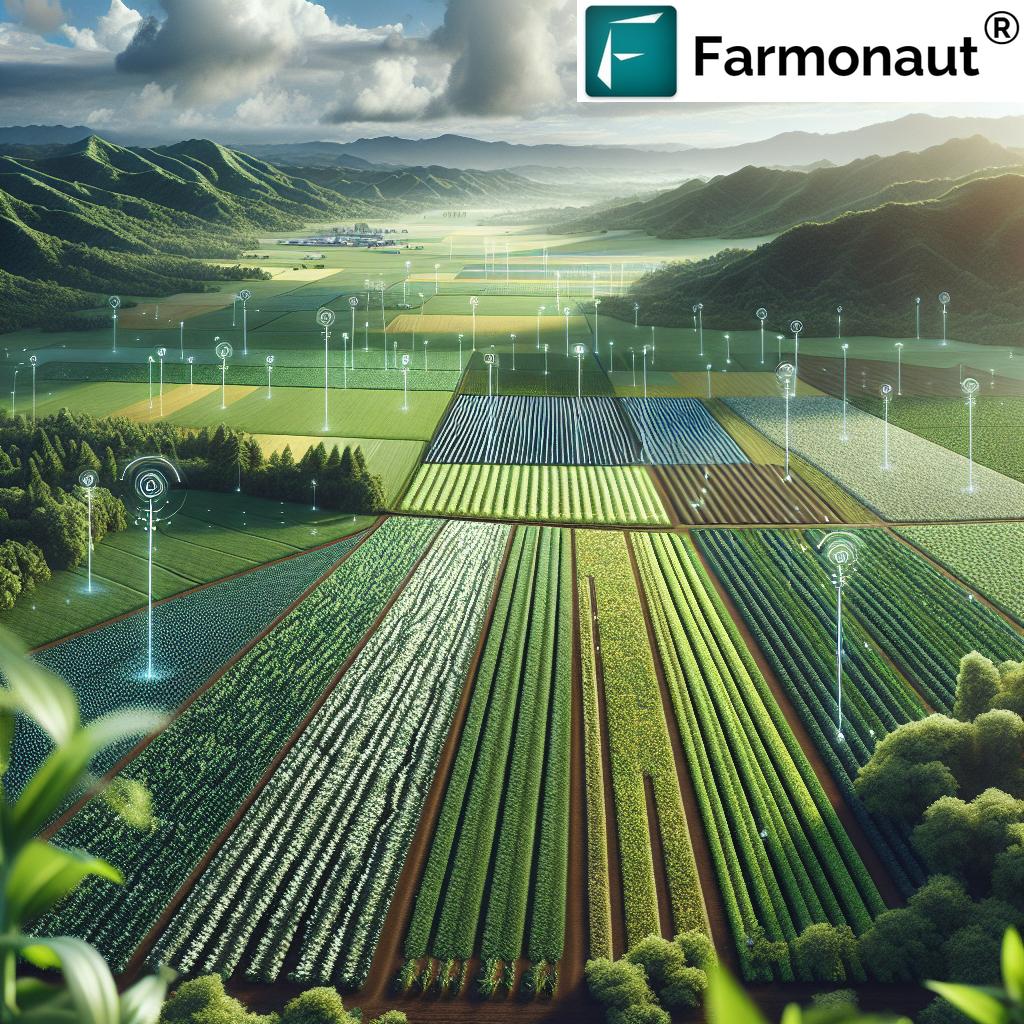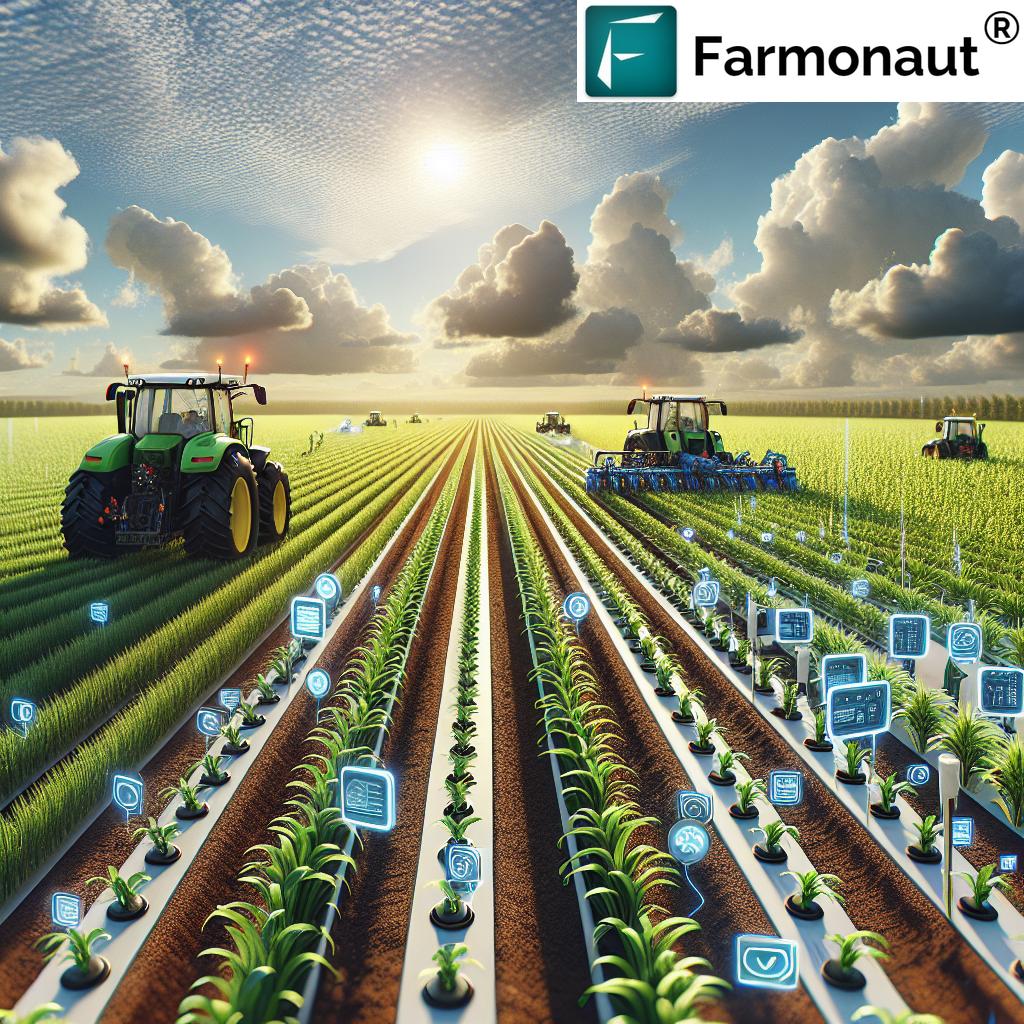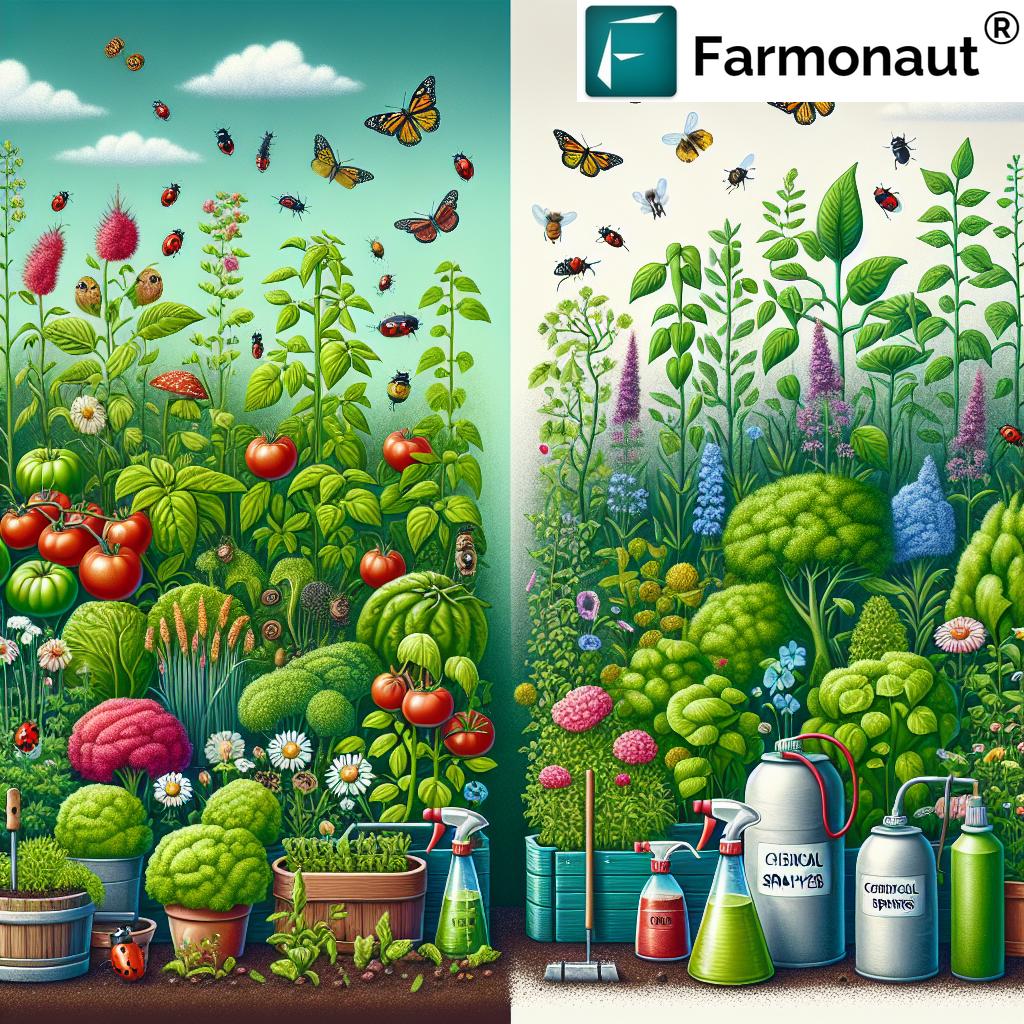Benefits of Using Modern Agricultural Machinery for Farmers: Boosting Productivity, Efficiency, and Sustainability
“Modern tractors can cover up to 20 acres per hour, increasing fieldwork efficiency by over 50% compared to manual methods.”
Introduction: Agriculture Meets Modern Machinery
The advent of modern agricultural machinery has transformed the way we approach farming worldwide. With global food demand soaring and environmental challenges intensifying, the integration of advanced technologies and equipment into agriculture is no longer optional—it is essential. Our industry now stands at an intersection where precision agriculture technologies are enhancing farming efficiency and productivity, ensuring that farmers not only meet the demands for higher yields but do so sustainably and efficiently.
In this comprehensive guide, we explore how modern agricultural machinery, supported by innovations like GPS guidance, automated harvesters, and satellite-powered farm management tools, is revolutionizing farming practices for farmers, agribusinesses, and stakeholders across the sector. We’ll discuss the quantifiable benefits—from labor savings in agriculture and cost reduction in farming to improvements in resource efficiency and minimization of environmental impact of agriculture.
Let’s dive in to discover how advanced farming equipment is shaping the future of sustainable farming practices and what this means for the efficiency, productivity, and prosperity of farmers today.
Quick Comparative Table: Modern Agricultural Machinery vs Traditional Methods
To highlight the difference, let’s compare the key benefits of modern agricultural machinery against traditional approaches for various farm operations.
| Machinery Type | Primary Function | Estimated Productivity Increase (%) | Estimated Cost Savings (%) | Environmental Impact | Ease of Adoption |
|---|---|---|---|---|---|
| Tractors (with GPS Guidance) | Plowing, planting, cultivation | 50–60% | 30–40% | Lower emissions, reduced input use | High (initial training needed) |
| Combine Harvesters | Harvesting multiple crops | 55–70% | 40–60% | Less waste, lower fuel usage | Moderate to High |
| Precision Seeders/Planters | Precision seed placement | 20–30% | 15–25% | Minimizes seed waste, less soil disturbance | Moderate |
| Drone Sprayers | Targeted spraying of crops | 15–25% | 10–20% | Reduces pesticide runoff | Moderate (tech familiarity required) |
| Traditional Hand Tools | Manual plowing/planting | Baseline | Baseline | Higher labor intensity, resource waste | Very High (no tech needed) |
As illustrated, modern agricultural machinery consistently outperforms conventional methods in efficiency, sustainability, and productivity. Not only do these innovations allow us to maximize crop yields, but they also reduce operational costs and environmental impacts — critical for commercial farming today.
Increased Productivity and Efficiency: Unlocking the Power of Modern Agricultural Machinery
One of the greatest achievements of modern agricultural machinery lies in its incredible impact on farming efficiency and productivity. Today’s advanced equipment—such as GPS-guided tractors, combine harvesters, and precision planters—enable us to handle tasks with an unmatched level of accuracy and speed.
Precision Guidance Systems: Fewer Mistakes, More Yields
Tractors equipped with GPS guidance systems can plant seeds with an astonishing 95–98% accuracy. This translates directly to minimizing seed waste and maximizing land utilization, avoiding overlaps and missed sections during field operations. According to authoritative industry sources, such enhanced seed placement results in greater crop uniformity and healthier plant growth—ultimately boosting crop yield optimization.
- Reduce input waste: GPS systems ensure that fertilizers, pesticides, and seeds are only applied where needed, reducing overall resource waste and cost.
- Increase operational speed: Large areas can be covered quickly, supporting timely planting and harvesting during critical crop windows.
Combine Harvesters: Streamlined Harvesting for Higher Returns
The introduction of combine harvesters has revolutionized the way we approach crop harvesting. By integrating reaping, threshing, and winnowing into a single process, these machines:
- Reduce human intervention and physical effort
- Support uninterrupted, large-scale sorting and collection of grains
- Enhance grain quality and reduce post-harvest losses
This level of operational efficiency means we can improve yield quality and meet the growing global food demand more effectively than ever.
“Precision seeders reduce seed wastage by up to 15%, ensuring optimal plant spacing and higher crop yields for farmers.”
Automation & Labor Savings in Agriculture: A Paradigm Shift in Farm Workforce
Mechanization has forever altered the relationship between farmers and farm labor. By automating repetitive or physically demanding tasks—such as planting, cultivation, and harvesting—we are able to reduce manual labor requirements dramatically.
Robotic Harvesters and Autonomous Tractors
Automated agricultural systems—like robotic harvesters and autonomous tractors—offer a solution to growing labor scarcity and rising costs. For example:
- These machines can work round the clock, enabling continuous operation during labor shortages.
- Replicate precise field tasks (planting, weeding, spraying) with almost zero human intervention.
Not only do these innovations reduce labor costs significantly, but they also allow our skilled workforce to focus on higher-value activities such as equipment maintenance, data analysis, and strategic planning.
Transformation of Workforce Dynamics
As mechanization increases, there is a transformation within the agricultural sector. The demand for traditional, unskilled labor has decreased, but new opportunities have arisen for those skilled in:
- Operating and maintaining sophisticated machinery
- Analyzing agricultural data for informed decision-making
- Developing and supporting advanced farming technologies
This shift represents not just a reduction in manual labor but an elevation of our industry’s skills base—driving commercial farming toward greater efficiency and innovation.
Sustainability & Environmental Impact of Agriculture: Building a Greener Future
Today’s agricultural challenges are about more than just productivity—they’re about ensuring the sustainability of our farming practices. Modern agricultural machinery plays a vital role in reducing the environmental impact of agriculture by:
- Optimizing input use (fertilizers, pesticides, and water)
- Minimizing runoff and contamination of water sources
- Enabling precision application—meaning inputs are delivered where and when they’re needed, and nowhere else
Advanced Irrigation Systems: Efficient Use of Water
Systems such as drip irrigation and automated water management platforms help:
- Directly deliver water to root zones, reducing evaporation losses and stress to crops
- Improve water-use efficiency, supporting crop health even in water-scarce regions
Low-Emission and Energy-Efficient Equipment
The development of electric and hybrid tractors, alongside energy-optimized machinery, supports the global drive to lower emissions and combat climate change. These machines:
- Reduce overall operational fuel use
- Help commercial farms achieve compliance with evolving carbon footprint monitoring standards
Optimizing farm operations this way aligns our industry goals with sustainability legislation and consumer expectations—two critical factors for long-term agricultural viability.
Advanced Technologies & Precision Agriculture: Smart Farming for the Next Generation
At the core of modern agricultural machinery is a new era of precision agriculture technologies—from sensor-rich planters to digital platforms driven by satellite imagery. These technologies enable us to:
- Monitor every aspect of crop and soil health, from nutrient status to disease risk
- Map and analyze field variability, empowering data-driven resource allocation
- Target interventions, whether applying inputs or adjusting irrigation schedules
The Digital Revolution in Farming
With tools such as GPS, GIS (Geographic Information Systems), and remote sensing, farmers are now enabled to engage in site-specific cropping, real-time equipment tracking, and automated harvesting solutions.
We cannot overlook the value of technological platforms that bring these capabilities straight to the field via farm management apps and software dashboards—making precision agriculture affordable and scalable for everyone.
- Farmonaut: Offers satellite-based crop health monitoring, AI-powered advisory, and real-time resource management. These tools make it easy to monitor farm conditions, track inputs, and respond to changing environmental or market factors conveniently from any device. Learn more about Farmonaut’s Satellite Technology.
API access to satellite and weather data helps developers and agribusinesses integrate precision analytics directly into existing agricultural systems. Discover more about the Farmonaut API or try our API Developer Docs.
Improved Crop Quality & Yield Optimization
The accuracy, timing, and control provided by modern agricultural machinery and precision planters and harvesters directly translate to higher quality and more uniform crops:
- Seeds are placed at optimal depth and spacing, supporting strong emergence
- Harvesters can collect crops at the correct maturity window, preserving quality and nutritional content
- Automated sorting and cleaning equipment further improve market-ready standards
Farmonaut’s Contribution to Crop Health and Yield
Using satellite imagery, AI, and blockchain-based traceability solutions, Farmonaut helps ensure timely interventions, verify the origin of produce, and maintain data transparency across the supply chain. Explore our advanced product traceability solutions for greater food safety and consumer trust.
Cost Reduction in Farming & Long-Term Savings
Although the initial investment in advanced farming equipment may be substantial, the cost savings realized over time are significant—especially in labor, resource inputs, waste reduction, and improved operational safety.
How Do Modern Machines Save?
- Reduced need for manual labor: Automation cuts labor input by 40–60% for various farming operations (e.g., land preparation, planting, harvesting).
- Lower resource waste: Fewer inputs lost to error or over-application; optimized irrigation systems dramatically improve water-use efficiency.
- Fewer crop losses: Timely interventions prevent disease/pest spread and minimize post-harvest waste—culminating in better yields and profit margins.
- Lower operational costs: Enhanced maintenance programs (like those available via Fleet Management Tools) enable farms to optimize machinery use, reduce breakdowns, and extend equipment lifespan.
In sum, modern agricultural machinery and smart technologies drive cost reduction in farming while positioning farmers to thrive in a demanding marketplace.
Farmonaut: Affordable Precision for Every Farm
While modern agricultural machinery is a game-changer, its benefits truly multiply when combined with robust, affordable digital systems for monitoring and analysis. Farmonaut’s mission is to democratize precision agriculture, making data-driven decision-making accessible for farmers of all scales.
Farmonaut’s Key Tools & Benefits
- Crop Health Monitoring: Multispectral satellite imagery delivers real-time insights—NDVI, soil moisture, and more. Farmers control irrigation, fertilizer, and crop protection with pinpoint accuracy.
- Jeevn AI Advisory System: Real-time, customized farming advice driven by AI and up-to-date satellite data for optimal yields and efficiency.
- Blockchain-Based Traceability: Ensures transparent, secure supply chains from field to consumer, unlocking new market opportunities.
- Fleet & Resource Management: Optimize machinery use, track locations, and ensure operator safety, all from your device—reducing operational costs and improving farm performance.
- Carbon Footprinting: Track and manage carbon emissions to comply with standards and environmental commitments. Learn more about Farmonaut’s Carbon Footprinting.
Farmonaut’s subscription-based model means any farm—whether individual, corporate, or governmental—can afford effective precision agriculture technologies.
Different tiers are available to support:
- Individual smallholder farmers seeking affordable crop monitoring
- Large-scale agribusinesses for plantation and land management
- Governments and NGOs wanting to enhance food security and sustainable practices
- Financial Institutions for satellite-based verification of crop loans/insurance—see more on Crop Loan & Insurance Verification
All accessible via web, iOS, Android, or API—making precision farming available wherever you are.
For large plantations, forest management, and resource optimization, explore Farmonaut’s Advanced Plantation, Crop & Forest Advisory services.
Challenges: Access, Skills & Sustainability in Mechanized Farming
Despite the many advantages, there are challenges and considerations as we continue to adopt modern agricultural machinery at scale:
- Cost Barriers for Smallholders: Large upfront costs can be prohibitive for small-scale farmers. Shared services, government support, and affordable platforms like Farmonaut help reduce this barrier.
- Skills/Training Requirements: Modern equipment requires specialized operation/maintenance skills. Continuous training and advisory platforms are crucial for success.
- Potential Loss of Traditional Knowledge: Mechanization sometimes sidelines local, time-honored practices. Thoughtful integration—combining local insights with advanced analytics—can ensure a respectful, inclusive innovation process.
- Environmental Trade-Offs: While most new machinery reduces resource waste, some can increase energy demand or require new types of waste handling. Robust tracking (like Farmonaut’s carbon footprint module) and responsive management help ensure true sustainability.
As we advance, supporting all farmers—including smallholders, women, and marginalized communities—must remain a key priority within agricultural development.
Frequently Asked Questions (FAQ): Benefits of Modern Agricultural Machinery for Farmers
What is “modern agricultural machinery”?
Modern agricultural machinery refers to technologically advanced tools and equipment used in farming—such as GPS-guided tractors, combine harvesters, drone sprayers, and automated planters—that streamline, automate, and optimize agricultural operations compared to traditional manual or animal-powered methods.
How does precision agriculture help farmers?
Precision agriculture combines GPS, sensors, and data analytics to ensure precise planting, input application, and harvesting—maximizing yields, reducing waste, and supporting sustainable farming practices.
Is mechanization only suited to large, commercial farms?
While large farms benefit most due to economies of scale, small and medium farms now have access to affordable, scalable solutions (such as Farmonaut) that lower entry barriers for sophisticated farm management and precise crop monitoring.
What are the environmental benefits of modern machinery?
Modern agricultural equipment reduces input waste (fertilizer, water, pesticides), lowers emissions with energy-efficient engines, and supports sustainable soil and water use, helping to minimize agriculture’s environmental footprint.
How can I monitor my farm’s carbon footprint?
Platforms like Farmonaut’s Carbon Footprinting tool allow us to track emissions and make informed changes to reduce environmental impact.
Can I track farm operations and equipment remotely?
Yes—using tools like Farmonaut’s Fleet Management, farmers can track equipment, manage logistics, monitor work, and optimize maintenance from anywhere.
How can I ensure the authenticity of my produce for export or retail?
Blockchain-based product traceability solutions can be implemented to verify and document every stage of the product journey, ensuring transparency and compliance for domestic and global markets.
Are these technologies difficult for average farmers to use?
Not at all—with continuous digital advancements, most modern agricultural tools are designed to be user-friendly. Farmonaut’s mobile/web apps make precision farming accessible even for first-time users.
Conclusion: The Agricultural Revolution—Powered by Machinery & Precision Data
In summary, the benefits of using modern agricultural machinery for farmers are profound and far-reaching. These innovations are not merely conveniences—they are essential tools for enhancing productivity, fortifying sustainability, and preparing agriculture to meet the global demand for food in an era of change.
Modern agricultural machinery enables us to:
- Boost productivity and crop yields through accuracy and automation
- Improve sustainability by optimizing resource use and minimizing environmental impact
- Reduce operational costs and labor requirements, transforming workforce dynamics
- Enhance transparency, traceability, and food quality, supporting safe, reliable food supplies worldwide
As technological innovation accelerates, integrating digital solutions like Farmonaut ensures that all farmers—regardless of operation size—can access the benefits, make informed decisions, and contribute to a resilient, sustainable global food system.
The future of farming is here. Harness the power of modern agricultural machinery and precision agriculture technologies—and let’s build a productive, sustainable, and prosperous tomorrow for all.

